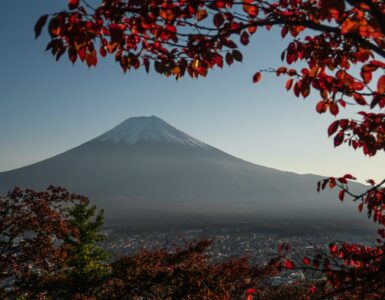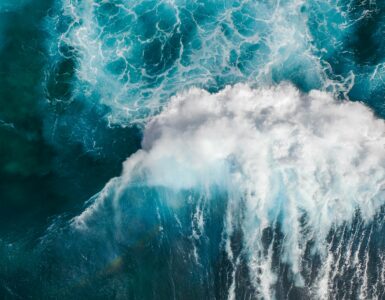Northern Europe – an area that boasts both modern, sophisticated cities and a wide array of historical heritage left behind by the Norse. When we think about Northern Europe, we often think about the Northern Lights, and sometimes the cold. Today, we will discuss both the human and physical geography of Northern Europe.
Northern Europe
Northern Europe is located north of the southern coast of the Baltic Sea. We can divide Northern Europe into three parts – Scandinavia, the British Isles, and the Baltics. However, we will be exploring Scandinavia and the Nordic countries today.
Geographically, the region consists of five countries – Norway, Sweden, and Denmark, Finland, and Iceland. There are also three territories in the region – the Faroe Islands, Jan Mayen, and Svalbard. That is if you were to leave Greenland out since Greenland is a territory of Denmark.
Demographics
In terms of size, Sweden is the largest country in Northern Europe. It also has the biggest population, with more than 10 million residents. That is near twice as many inhabitants as Norway and Denmark! On the other hand, Iceland has the smallest population, with about 366,000 residents. That aside, the three territories in Northern Europe are small separate islands and have much smaller populations relative to their size.
Every country in Northern Europe has developed economies and one of the highest standards of living in the world. They often score highly on surveys used to measure the quality of life of residents, including the Human Development Index (HDI). The top three countries in terms of HDI are Norway, Iceland, and Sweden, with values of 0.957, 0.949, and 0.945, respectively. In fact, none of the five countries in the region has HDI scores below 0.930. Norway also ranks first in the world in terms of its HDI.
Cultures
Northern Europe has an abundance of festivals and holidays, be it Christian, pagan or non-religious. During the Early Middle Ages, the Roman Catholic Church expanded into Northern Europe and spread Christianity.
The culture of Sweden has long been recognised for the accomplishments of a wide variety of artists. Prehistoric Sweden is known to have been the origin of Norse culture, which was dominant in all Scandinavian countries.
On top of that, Iceland’s culture is renowned for its literary heritage, which dates back to the 12th century. Icelandic traditional arts include woodcarving, silversmithing, and weaving. The culture of the neighbouring Faroe Islands also has its roots in the Nordic culture. Since the Faroe Islands were long isolated from the other main cultural phases, they were able to maintain a great part of their traditions and history. This includes Faroese – the language spoken in the Faroe Islands, which is one of the three insular Scandinavian languages, with the other two being Icelandic and the extinct Norn. That said, Faroese and Icelandic have similar writing methods. Some of Iceland’s traditions include Fyrsti Vetradagur (also known as First Day of Winter), and Jólabókaflóðið (The Christmas Book flood).
Norway’s culture brought about a strong romantic nationalistic movement. Between 1840 and 1867, Norwegian art and literature emphasised the aesthetics of Norwegian nature and the uniqueness of its national identity. Similarly, Denmark’s culture has a rich intellectual and artistic heritage. Culture and the arts thrive in Denmark due to the high amount of government funding used to encourage citizens to be more involved.
The culture of Finland combines common Nordic culture and their native heritage. Due to its history and location, various Finnic and Baltic people, together with the former dominant powers of Sweden and Russia, have influenced Finland’s culture.
Religion
Since the High Middle Ages, Christianity has dominated most of Europe. There are three major denominations in Northern Europe – Roman Catholic, Protestant, and Eastern Orthodox. However, in Northern Europe, about 36% of the people are Evangelical Lutherans, a branch of Protestantism. Lutheran is the next largest religion practised and is followed by Roman Catholicism. Other religions are the fourth largest practised followed by the Christian, Orthodox, Russian Orthodox, and Muslim religions.
The Evangelical Lutheran and Lutheran religions are the most significant religions. We can find them in large areas of many countries across Northern Europe, such as Norway, Iceland, Denmark, Sweden, and Finland. These religions are still the most followed because of the spread of them from years past. The people from long ago might have persuaded their descendants and others to worship, leading to the dominance of these religions over others in Northern Europe.
Physical Geography
Major cities
We can find the top 10 major cities in Northern Europe in Denmark, Sweden, Finland and Norway. The largest cities in these countries are Copenhagen, Stockholm, Helsinki, and Oslo, respectively. Stockholm is the most populous city with a population of over 1.5 million! The next most populous is Copenhagen, with 1.35 million citizens. In descending order, we have Helsinki, Oslo, Gothenburg, Malmö, Tampere, Aarhus, Turku, and Bergen.
Of course, let us not forget the major cities of other countries and territories, including Reykjavik of Iceland, and Tórshavn of the Faroe Islands.
Landscape
The landscape of Scandinavia is extremely varied. Some notable features include Norwegian fjords, the Scandinavian Mountains, the flat, low areas of Denmark, and the archipelagos of Sweden and Norway. The deepest fjord in Norway is the Sognefjord, with its deepest point located 1.3 km beneath its surface. We can also find moraines and lake areas in Finland. The Scandinavian Peninsula measures roughly 2,000 km from north to south.

Climate
The climate in Scandinavia and Nordic countries in most parts are generally mild. However, it depends on which part of Northern Europe you are in. The weather in Denmark and south Sweden follows a marine west coast climate, which is typical for its location in Europe. We can also see the milder coastal climate on the west coast of Norway. Central Scandinavia from Oslo to Stockholm has a more humid continental climate, which gradually gives way to the subarctic climate further north, a lot like the Finnish weather.
Transportation
Among the Scandinavian countries, the most commonly used form of transportation is the public bus. Scandinavian transportation, like other parts of Europe, operates based on zones. One key feature of transport in Northern Europe is that passengers can travel using the same ticket for bus, train, rail and light rail and ferries in some urban cities. Another key feature is that virtually all bus services are franchised. Some metro and tram services are franchised as well. This helps to cut costs and increase the quality of transport.
Currently, these countries have ambitious plans to reduce carbon and toxic emissions on their public transport networks. These include low or zero-emission bus fleets and modal shifts from other transport modes. Copenhagen’s metro and suburban rail services are a key part of the city’s plan to be the first in the world to be CO2-free by 2025. There are no diesel-powered buses in Oslo since 2020, and Sweden’s Skåne’s bus fleet runs on fossil-free fuel!
Conclusion
A historically rich region, Northern Europe continues to be one of the top few regions in the world. This includes many factors, such as the quality of life, the economy, and the culture. Northern Europe will continue to blow our minds with their innovative, environmentally-friendly ways of living in the years to come.
Disclaimer: All the above information are accurate at the time of writing. This article was last updated on 7 January 2022.





Add comment